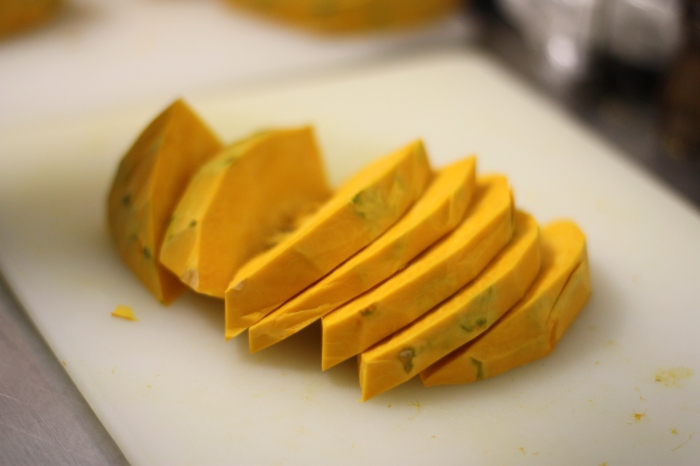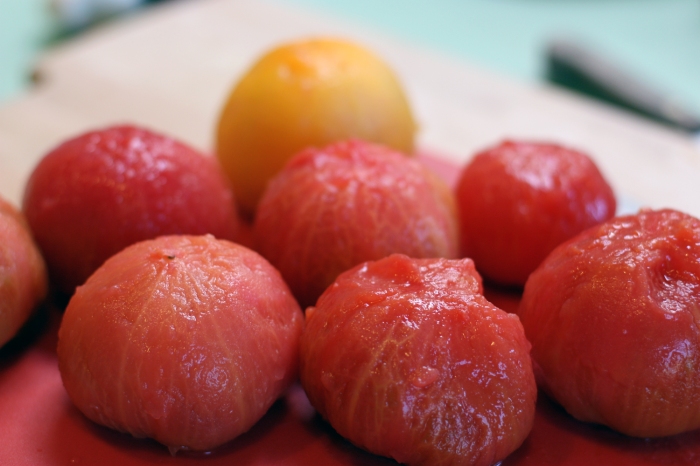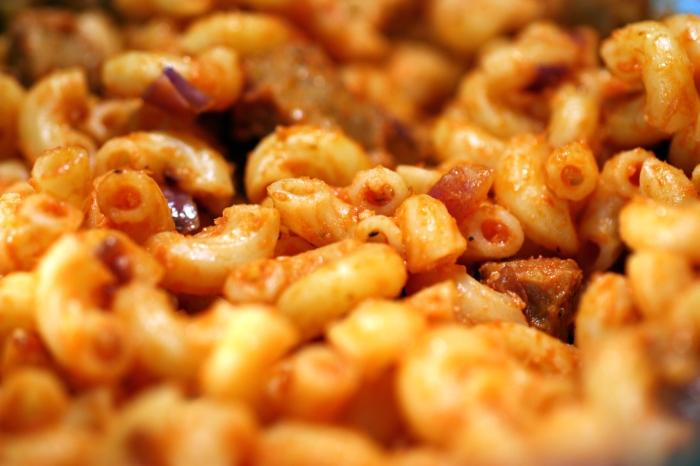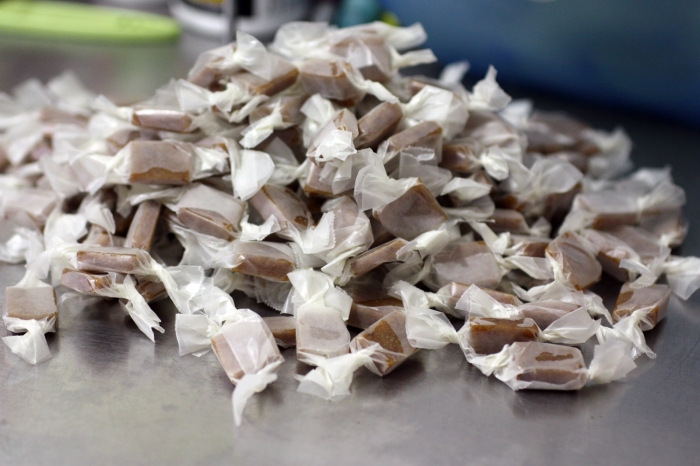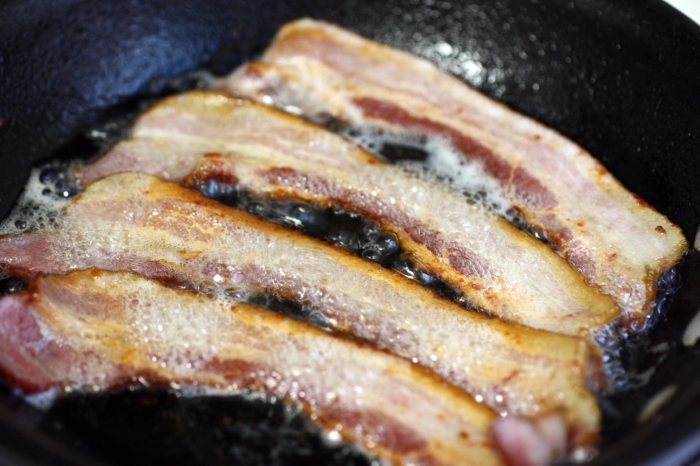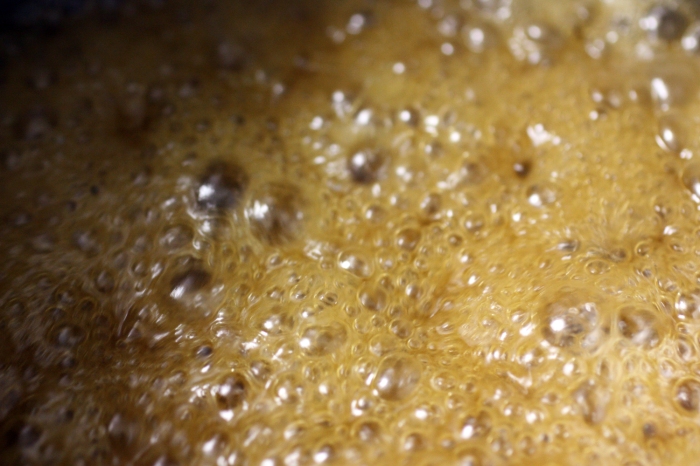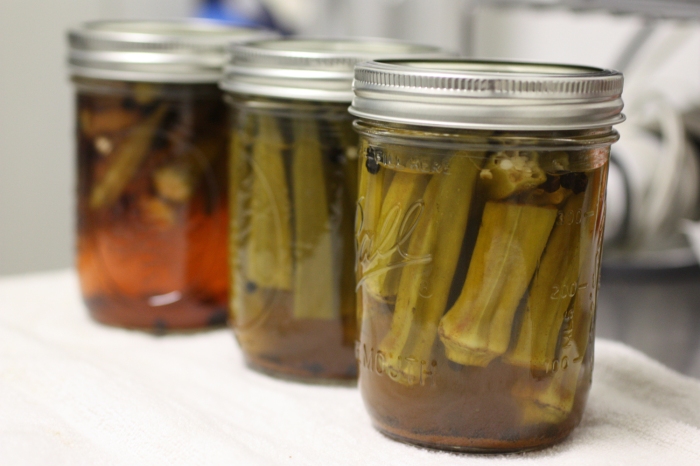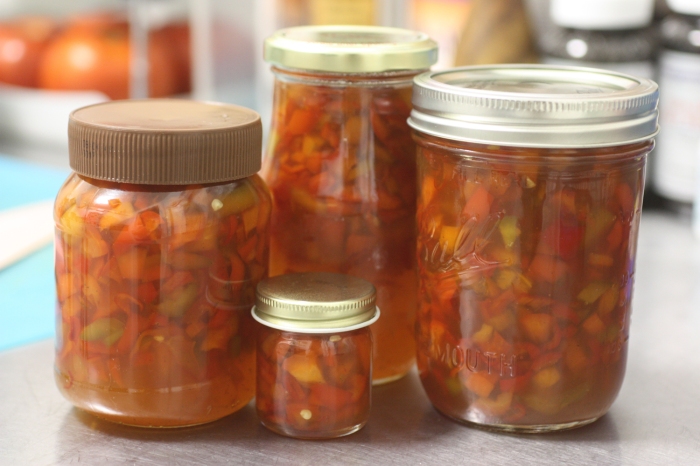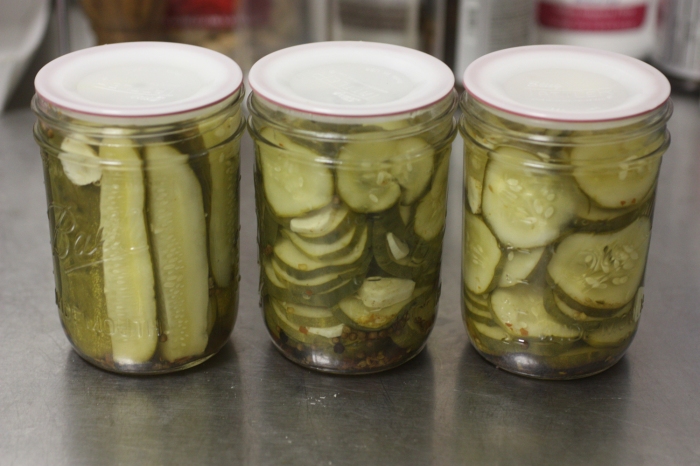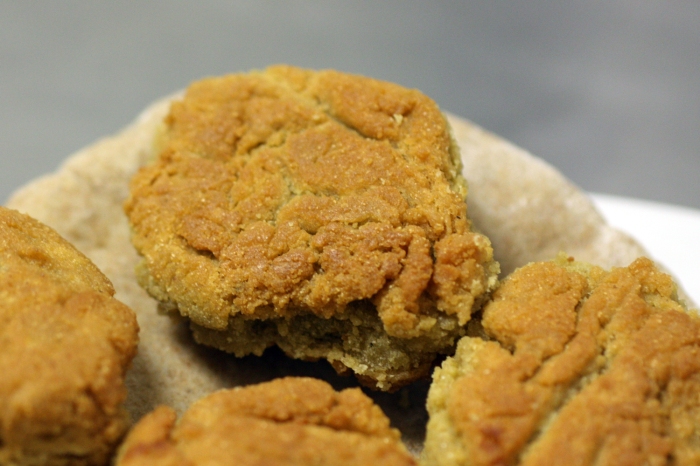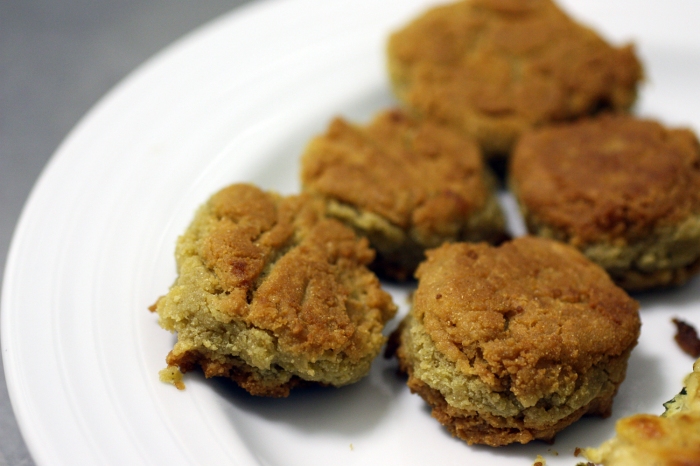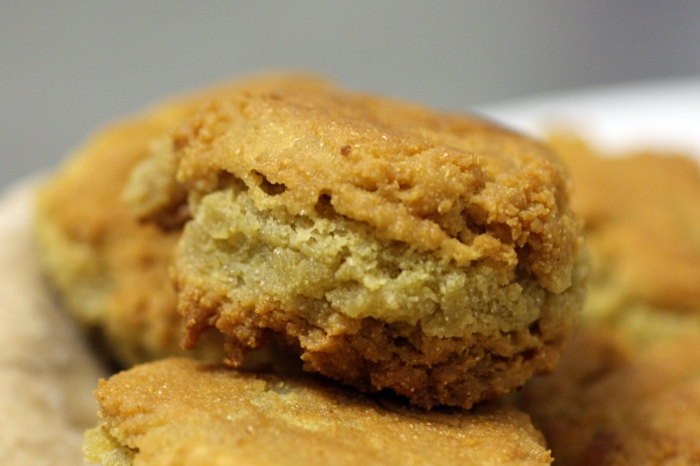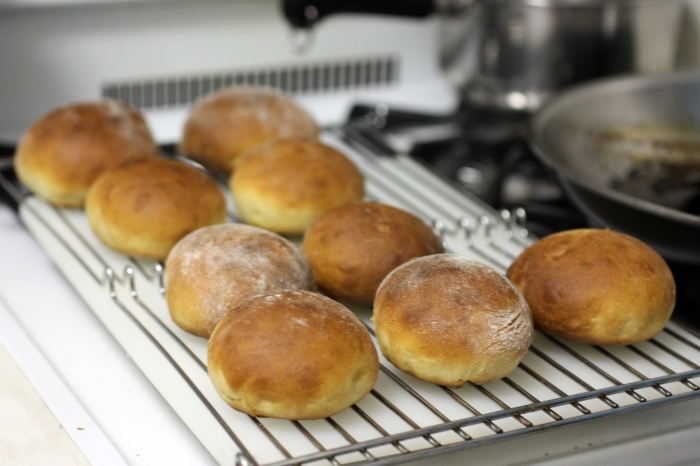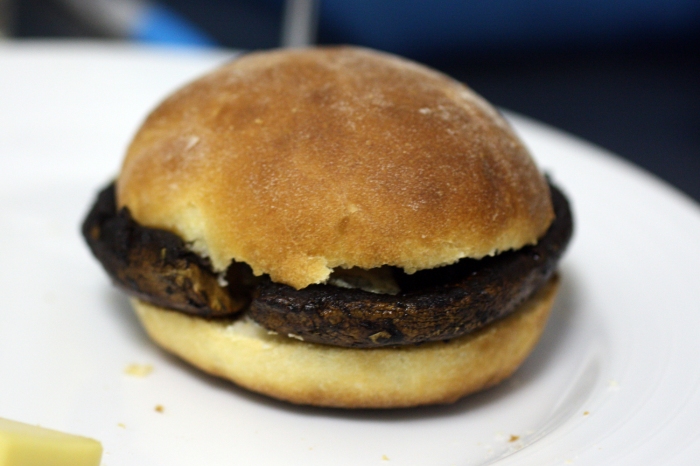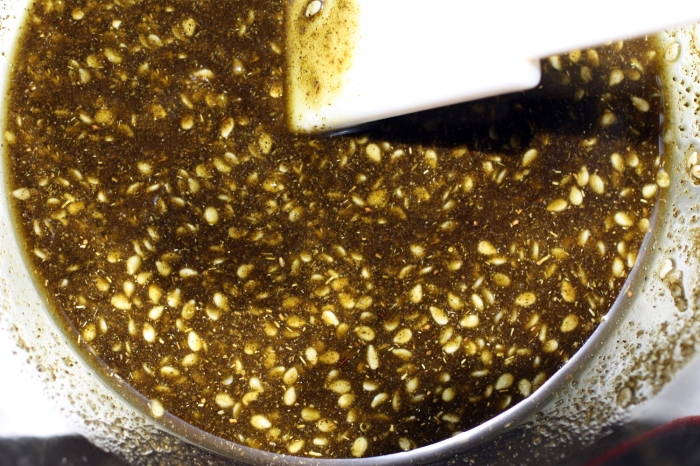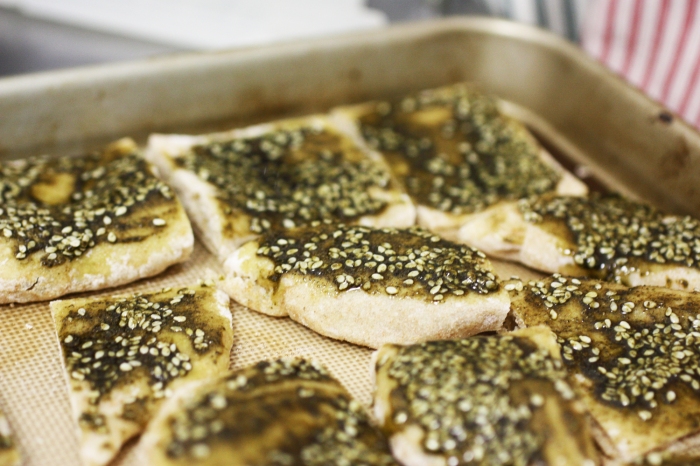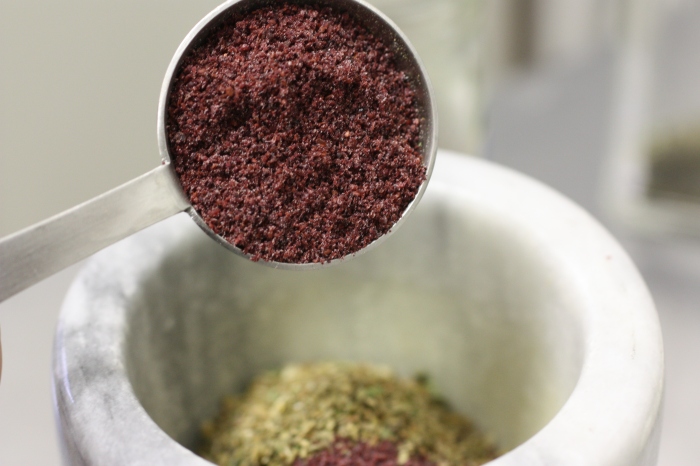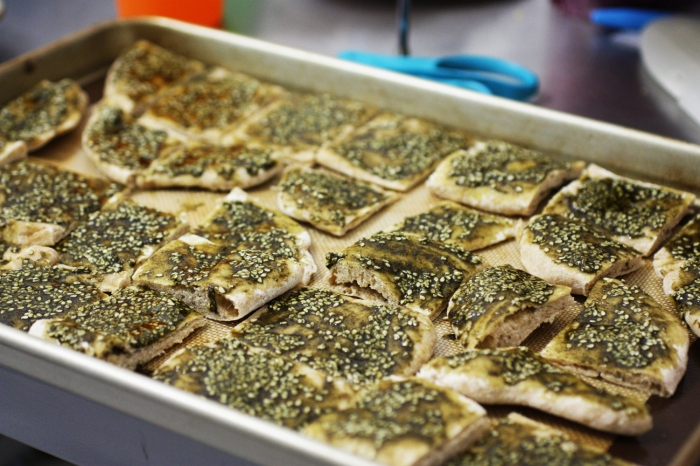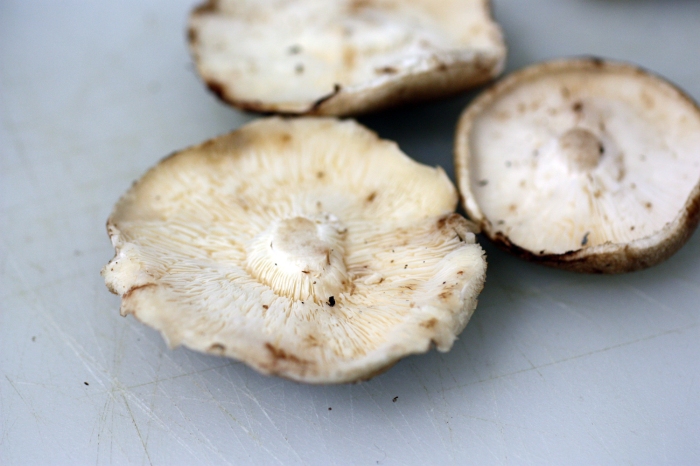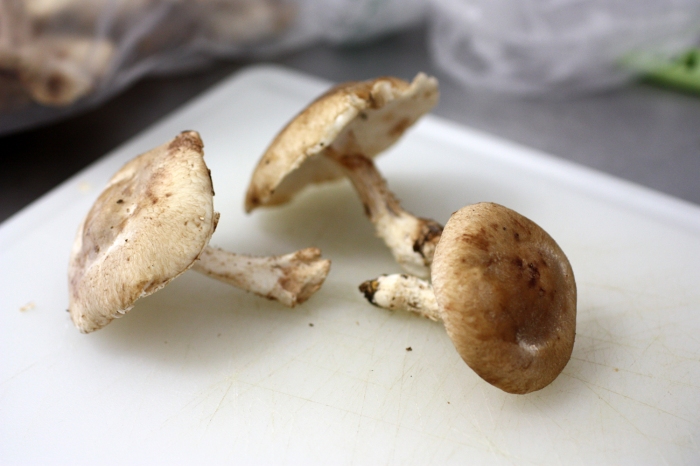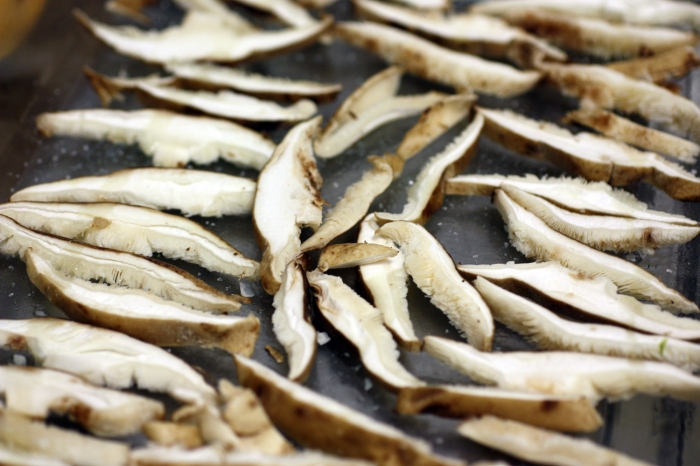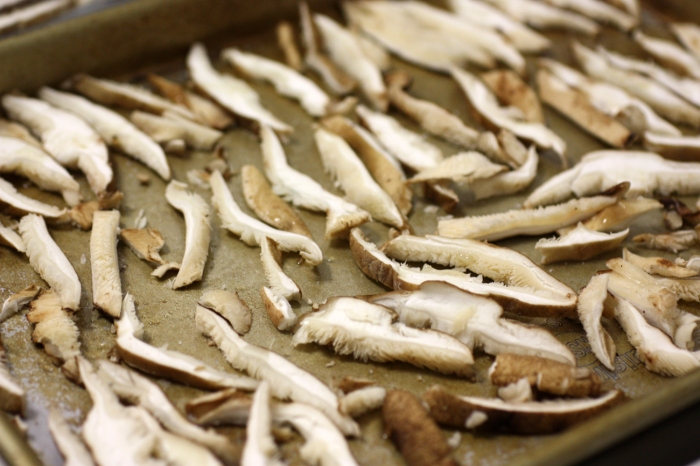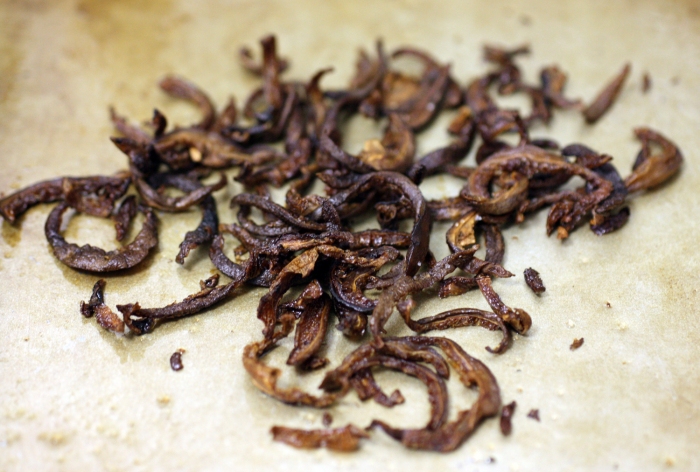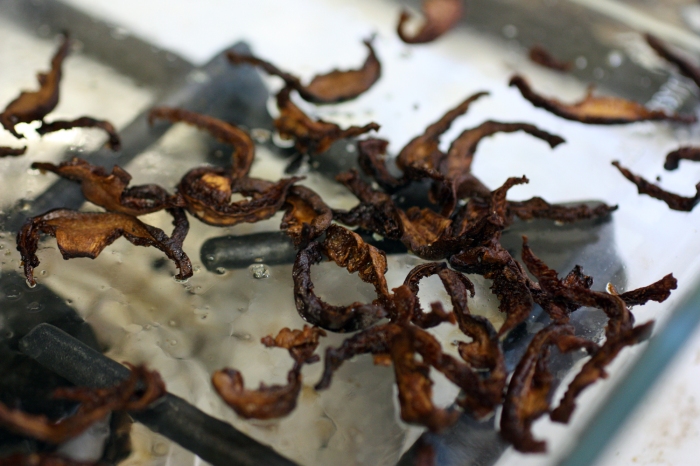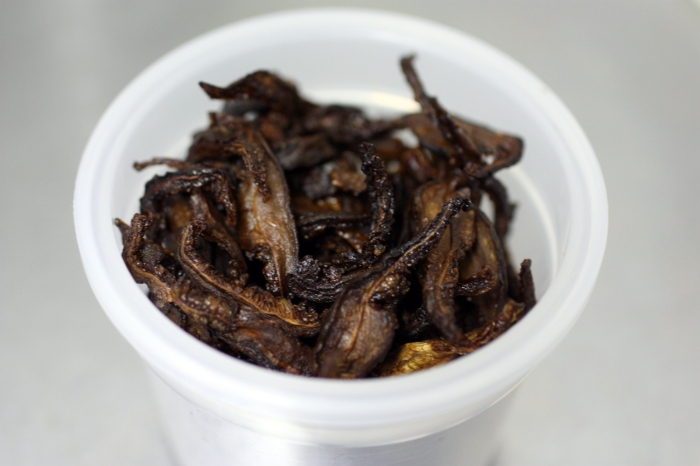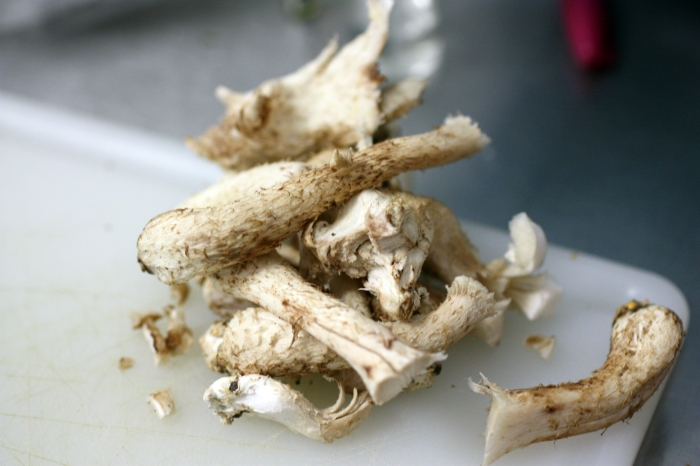
This past week, I became obsessed with Smitten Kitchen’s luxe butterscotch pudding recipe. It’s got eggs, cream, butter, and a deep caramel flavor. What’s not to love? I made it for my two kids and they went wild. I’d also been eyeing Smitten’s apple cider caramels recipe and thinking of my own bacon caramels, and imagining doing a mashup. While licking a last spoonful, my daughter declared that she wanted apple pudding next and I had a brilliant idea. Instead of making caramels that I would feel guilty having around the house, I would turn that apple cider into the butterscotch for the luxe butterscotch pudding. With the eggs and dairy, it’s almost a meal, so I’m not a horribly irresponsible parent for letting them have as much as they want, I tell myself.
Well, it came out far better than I imagined. The apple flavor is so intense and tart. The creamy custard silkily complements the whole thing. I let me daughter scrape the cooled down pot clean and she looked like some kind of rabid creature when we tried to take it away. If that’s not an endorsement, I don’t know what is.
Recipe: Apple Cider Pudding
Makes 6 servings
- 6 cups apple cider
- 3 tbs cornstarch
- 2 egg yolks
- 1 whole egg
- 1/2 tsp salt
- 2 1/2 cups half and half, or 1 cup cream, 1 cup whole milk
- 2 tbs butter
- 1 tsp vanilla
- dash of cinnamon (optional)
- In a heavy bottomed saucepan, bring the apple cider to a strong simmer until reduced to a little under 1 cup. This may take about an hour.
- In a large measuring cup, or a medium mixing bowl, separate the eggs and whisk in the cornstarch and salt thoroughly, making sure there are no lumps. To temper the eggs, ladle the hot reduced apple cider into the very slowly (you can’t go too slowly), until at least half of the cider is incorporated and the cup/bowl is warm to the touch. Whisk until smooth.
- Slowly whisk the half and half into the egg and cider mixture.
- Pour the entire egg mixture back into the saucepan with the rest of the cider and bring up to a low-medium heat whisking or stirring until it reaches the desired thickness. Once it starts thickening, it should continue quickly. I like my pudding on the thicker side, so I let it thicken until it drips very slowly from the whisk and then it will thicken further as it cools.
- Remove from heat. Whisk in the butter vigorously, then add the vanilla and cinnamon if using and give it a final mix.
- Pour into 6 ramekins, cover with plastic and refrigerate for a few hours or overnight until set.
